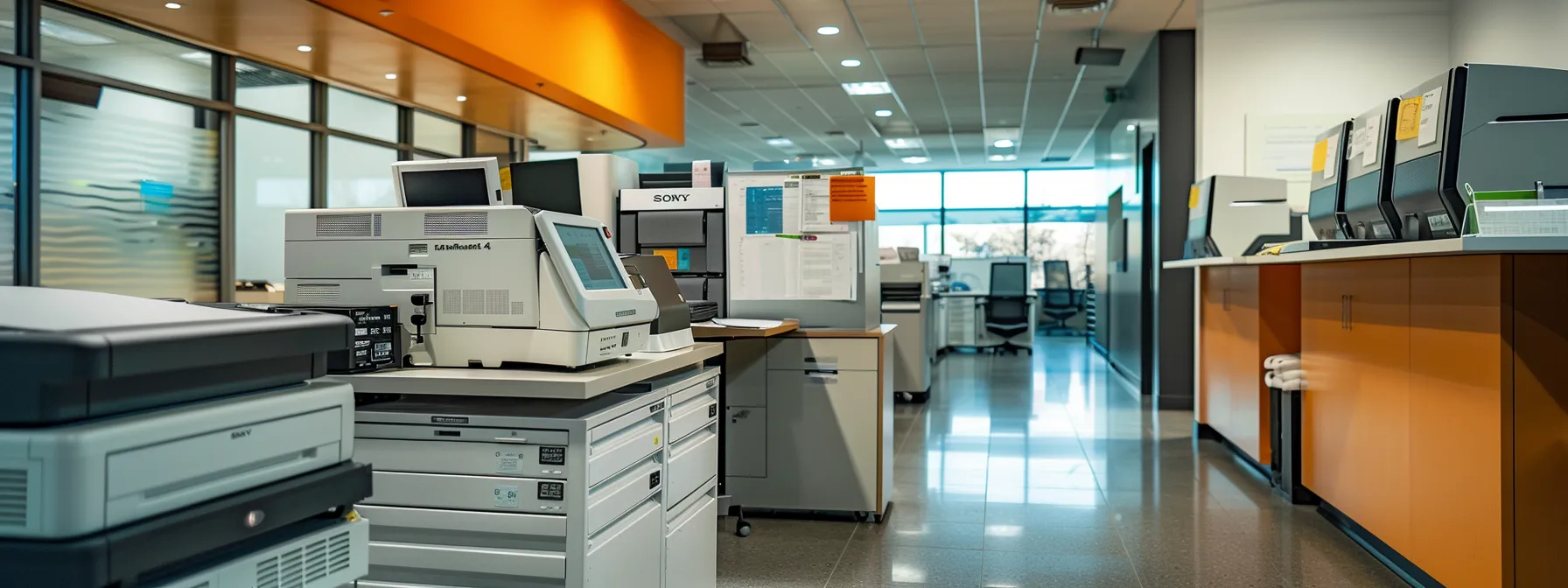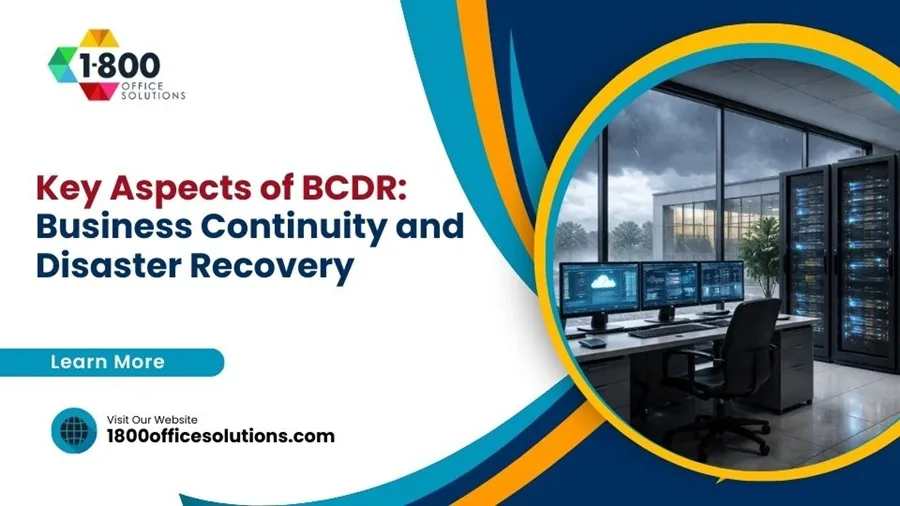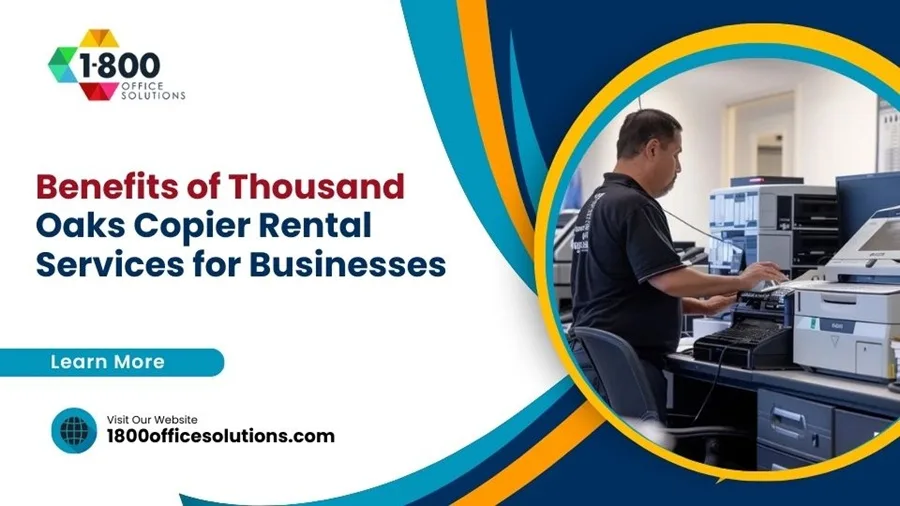Maximizing Your Return on Investment With Managed Print Services
Many businesses struggle with managing print costs effectively, often leading to wasted resources and decreased productivity. Managed Print Services (MPS) can transform this landscape by optimizing document consumption and inventory management. This article will explore how MPS enhances ROI through cost reduction strategies, increased productivity, and tips for selecting the right provider. By understanding these key elements, business owners can make informed decisions that improve their overall business model and maximize their returns.
Understanding How Managed Print Services Enhance ROI

Managed Print Services (MPS) streamline print management by consolidating resources and optimizing workflows. This section will explore the financial impact of MPS on businesses, address the challenges of traditional print management, and demonstrate how effective print services contribute to increased profitability. Moreover, it will examine the role of help desk support in enhancing workforce productivity and reducing environmental impact through a lower carbon footprint.
Defining Managed Print Services and Their Role
Managed Print Services (MPS) refer to comprehensive solutions that help organizations manage their printing environment effectively. By integrating various printer formats, including multifunction devices, and streamlining enterprise content management, MPS reduces the complexity of print operations. This structured approach not only optimizes resource allocation but also enhances customer satisfaction by ensuring consistent print quality and reliability across all devices.
The Financial Impact of MPS on Your Business
The financial impact of Managed Print Services (MPS) on a business can be substantial, often resulting in significant cost savings. By implementing effective document management strategies, organizations can reduce waste and improve workflow efficiency, minimizing unnecessary expenditures on printing supplies. Furthermore, through practices like recycling and a careful risk assessment of printing needs, businesses can better align their resources, facilitating a smoother digital transformation while ensuring that every dollar spent contributes to their overall profitability.
Challenges of Traditional Print Management
Traditional print management presents several challenges that can hinder a business’s efficiency and profitability. Many companies struggle with outdated practices that lack effective content management, leading to wasted resources and confusing asset tracking. Additionally, without the right print management software, customer service can suffer due to inconsistent print quality and delays caused by inefficient workflows, leaving customers feeling frustrated and undervalued, which ultimately impacts the bottom line.
The Link Between MPS and Increased Profitability
Managed Print Services (MPS) significantly enhance a business’s return on investment by leveraging analytics to optimize printing operations and reduce costs. By streamlining accounting processes and decreasing unnecessary print-related expenses, organizations can reallocate resources more effectively, ultimately boosting profitability. Furthermore, MPS serve as a channel for improving employee productivity, allowing businesses to focus on core activities instead of managing print resources, which directly influences overall financial performance.

Key Benefits of MPS for Maximizing Your Investment
Cost savings through efficient print management are a primary advantage of Managed Print Services (MPS). These solutions enhance security and compliance while streamlining workflows for better productivity. Furthermore, they contribute to environmental benefits, translating to favorable cost implications. This section will detail how MPS impacts profit, improves infrastructure, and supports a comprehensive document management system, all backed by regular audits.
Cost Savings Through Efficient Print Management
Cost savings through efficient print management are a significant benefit of Managed Print Services (MPS) for businesses. By integrating advanced firmware and optimizing procurement processes, MPS allows organizations to streamline their printing infrastructure, reducing waste and overall operational costs. Moreover, companies that adopt a unified communications strategy in their print management can bolster their defenses against cyberattacks, ensuring not just financial efficiency but also enhanced security across their operations.
Enhancing Security and Compliance
Enhancing security and compliance is a critical benefit of utilizing managed print services (MPS) within any organization. With the integration of advanced output management solutions, businesses can safeguard sensitive information that might be exposed during the print process. By ensuring that every machine operates with up-to-date toner levels and security protocols, MPS offers a proactive approach to mitigate risks and support compliance with industry regulations, thus maximizing the return on investment.
Streamlining Workflows for Better Productivity
Streamlining workflows through managed print services (MPS) significantly enhances productivity within organizations. By integrating fleet management practices, employees can easily request service when issues arise, minimizing downtime and ensuring that printing resources are consistently operational. This efficiency reduces the burden on teams who can focus on their core tasks, rather than getting bogged down with printing challenges, ultimately leading to improved performance and cost savings.
Environmental Benefits and Cost Implications
Implementing Managed Print Services (MPS) fosters sustainability by reducing paper waste and energy consumption, contributing to a lower carbon footprint. Organizations can significantly curb expenses associated with printing through optimized resource use, aligning their operations with environmentally responsible practices. Furthermore, MPS enhances information security by ensuring that devices are efficiently managed and maintained, reducing vulnerabilities during troubleshooting and supporting robust information technology protocols.
Strategies to Reduce Costs With Managed Print Services

Reducing costs with Managed Print Services (MPS) begins with assessing current print expenditures to identify areas for improvement. Implementing cost-effective MPS solutions, utilizing advanced print technologies, and tailoring services to specific business needs can enhance productivity and revenue. Additionally, emphasizing print security through authentication measures protects sensitive information while maximizing the return on investment.
Assessing Current Print Expenditures
Assessing current print expenditures is a crucial first step in maximizing return on investment with managed print services (MPS). Organizations should conduct a thorough analysis of their existing print management practices to identify areas where automation and adoption of advanced technologies, such as those offered by Xerox, can lead to cost reductions. By understanding spending patterns, businesses can better align their print strategies with operational needs, ensuring efficient resource allocation and ultimately enhancing profitability.
Implementing Cost-Effective MPS Solutions
Implementing cost-effective Managed Print Services (MPS) solutions involves optimizing the print fleet to ensure the most efficient use of resources. By partnering with a reputable vendor, businesses can leverage advanced print solutions that monitor usage, control inventory, and analyze invoice data to identify areas for cost reduction. Furthermore, incorporating energy-efficient devices into the fleet not only lowers operational costs but also aligns with sustainability goals, providing a dual benefit to organizations seeking to maximize their return on investment.
Utilizing Advanced Print Technologies
Utilizing advanced print technologies is essential for businesses aiming to reduce costs and support a paperless office environment. By integrating mobile device printing solutions, organizations can minimize waste by allowing employees to print only necessary documents directly from their smartphones or tablets, thus decreasing the volume of unnecessary print jobs. This not only enhances operational efficiency but also significantly lowers the vulnerability of sensitive information through better management of print tasks, leveraging advanced knowledge of printing habits within the organization.
Tailoring MPS to Your Business Needs
Tailoring Managed Print Services (MPS) to a business’s specific needs is essential for optimizing the total cost of ownership and enhancing operational efficiency. By analyzing unique printing patterns and aligning print policies with organizational goals, businesses can minimize waste and streamline their supply chain. Furthermore, outsourcing print management allows organizations to focus on their core activities while benefitting from the expertise of MPS providers, ultimately leading to reduced costs and improved productivity.
Boosting Productivity and ROI With MPS Solutions

Reducing downtime with preventative maintenance, simplifying print infrastructure management, empowering users with user-friendly systems, and automating administrative tasks are crucial to boosting productivity and return on investment (ROI) with Managed Print Services (MPS). Organizations can optimize their large format printing capabilities and streamline operations, ensuring that all print resources receive the attention they need for optimal performance.
Each of these aspects will be explored in detail, highlighting how MPS solutions contribute not only to efficiency but also to enhanced productivity and cost savings across the organization.
Reducing Downtime With Preventative Maintenance
Reducing downtime through preventative maintenance is essential for maximizing ROI with Managed Print Services (MPS). By partnering with a managed print provider, businesses can implement regular maintenance schedules that minimize equipment failure and ensure reliable operation. This proactive approach not only mitigates risks associated with unexpected printer breakdowns but also aligns with effective document management solutions, further supporting the organization’s digitization efforts.
Simplifying Print Infrastructure Management
Simplifying print infrastructure management with Managed Print Services allows organizations to streamline their document output processes and improve efficiency. By partnering with providers like 1800 Office Solutions, businesses can consolidate their printing resources, enabling better tracking and management of print costs. This is crucial for reducing operational complexity and ensuring that employees can focus on core activities rather than troubleshooting printing issues.
Empowering Employees With User-Friendly Systems
Empowering employees with user-friendly systems is a cornerstone of maximizing ROI through Managed Print Services (MPS). By implementing intuitive printing solutions, organizations enable staff to easily access and manage print tasks without technical barriers, significantly enhancing productivity. For instance, mobile printing options allow employees to print directly from their smartphones or tablets, reducing delays and streamlining workflows—ultimately leading to higher efficiency and better use of company resources.
Automating Administrative Tasks
Automating administrative tasks through Managed Print Services (MPS) is a significant strategy for enhancing productivity and maximizing return on investment. By implementing automated workflows, organizations can reduce the time spent on repetitive printing tasks, allowing employees to focus on more strategic activities. This automation not only decreases operational delays but also minimizes errors in document handling, fostering a more efficient work environment that ultimately contributes to improved profitability.
Selecting the Best MPS Provider for Optimal Returns

Selecting the best Managed Print Services (MPS) provider is crucial for maximizing return on investment. Key criteria include identifying reliable partners, asking essential questions to gauge their offerings, understanding service agreements and associated costs, and evaluating customer support quality. Each aspect ensures that businesses receive tailored solutions that enhance print efficiency while promoting profitability.
Criteria for Choosing a Reliable MPS Partner
Choosing a reliable Managed Print Services (MPS) partner is vital for maximizing return on investment while ensuring efficient print management. Organizations should look for providers with a proven track record in the industry, as this experience translates into effective solutions tailored to various business needs. Additionally, evaluating the quality of customer support offered, including responsiveness and technical assistance, is critical to ensuring that any printing challenges can be swiftly addressed, thus minimizing disruptions and enhancing productivity.
Important Questions to Ask Prospective Providers
When selecting a managed print services (MPS) provider, businesses should ask prospective partners about their experience and success with similar organizations. Understanding how they tailor their services to meet individual business needs is essential for maximizing return on investment. Additionally, inquiries regarding their approach to ongoing support and maintenance can reveal how effectively they will manage printing environments and minimize downtime, ultimately contributing to overall productivity and cost savings.
Understanding Service Agreements and Costs
Understanding service agreements and costs is essential when selecting a managed print services (MPS) provider, as these elements directly impact a business’s return on investment. Organizations should carefully review service agreements to identify included features, such as maintenance, support, and supply replenishment, ensuring they align with operational needs. Additionally, analyzing the costs associated with various service levels allows businesses to make informed decisions that balance value and effectiveness, ultimately optimizing their print management strategy for better financial outcomes.
Evaluating Support and Customer Service Quality
When evaluating support and customer service quality in Managed Print Services (MPS) providers, businesses should consider responsiveness, accessibility, and expertise. Reliable support ensures that any technical issues are promptly addressed, minimizing downtime and enhancing overall productivity. For instance, a provider offering 24/7 support not only resolves problems quickly but also reflects a commitment to maintaining optimal print operations, ultimately maximizing the return on investment for the organization.
Measuring ROI Improvements With Managed Print Services

Measuring ROI improvements with Managed Print Services (MPS) involves setting measurable goals and KPIs to gauge success effectively. By tracking performance and cost savings, organizations can analyze data for continuous improvement. Additionally, case studies demonstrating ROI success provide practical insights into the benefits of MPS, ensuring firms can make informed decisions for future enhancements.
Setting Measurable Goals and KPIs
Setting measurable goals and key performance indicators (KPIs) is essential for evaluating the success of Managed Print Services (MPS) and maximizing return on investment. Organizations should establish specific targets related to print volume reduction, cost savings, and workflow efficiencies to effectively track improvements over time. For example, target reductions in paper consumption or printing costs can directly highlight the financial benefits of MPS, guiding businesses in their ongoing assessment and adjustment of print management strategies.
Tracking Performance and Cost Savings
Tracking performance and cost savings is essential for businesses looking to maximize their return on investment with Managed Print Services (MPS). Organizations should establish clear metrics that monitor printing volumes, supply usage, and maintenance costs, allowing for a comprehensive analysis of expenses and efficiencies. By regularly reviewing this data, companies can identify areas for improvement, ensuring that the MPS effectively aligns with their operational goals and contributes positively to their overall financial health.
Analyzing Data for Continuous Improvement
Analyzing data for continuous improvement is crucial for businesses utilizing Managed Print Services (MPS) to maximize their return on investment. By regularly monitoring and reviewing metrics such as print volume, supply usage, and operational costs, organizations can identify trends and areas for optimization. For example, a firm may discover that certain departments consistently exceed their printing quotas, prompting a targeted strategy to reduce waste and improve efficiency, thereby directly enhancing their ROI.
Case Studies Demonstrating ROI Success
Case studies highlighting the successes of Managed Print Services (MPS) illustrate the tangible ROI improvements organizations have achieved. For instance, a mid-sized manufacturing company implemented MPS and documented a 30% reduction in printing costs within the first year. By optimizing their print infrastructure and inventory management, businesses have reported significant savings, enhanced workflow efficiencies, and improved employee productivity, demonstrating the effectiveness of MPS as a strategic investment.
Conclusion
Maximizing return on investment with Managed Print Services (MPS) is crucial for enhancing operational efficiency and reducing costs. By effectively assessing print expenditures and implementing tailored solutions, businesses can achieve significant savings while improving productivity. Moreover, MPS strengthens security compliance and streamlines workflows, positioning organizations for sustainable growth. Embracing MPS not only aids financial performance but also fosters a more environmentally responsible approach to printing.











